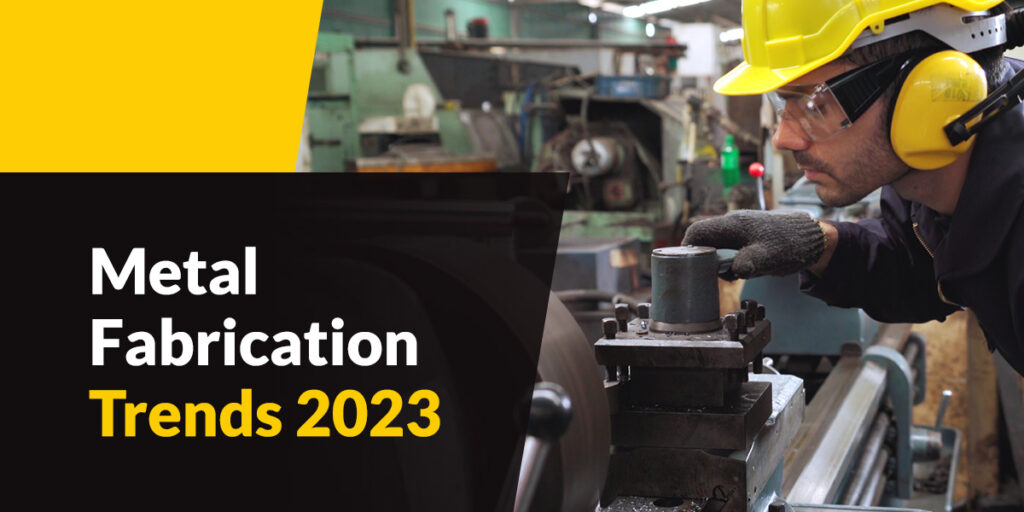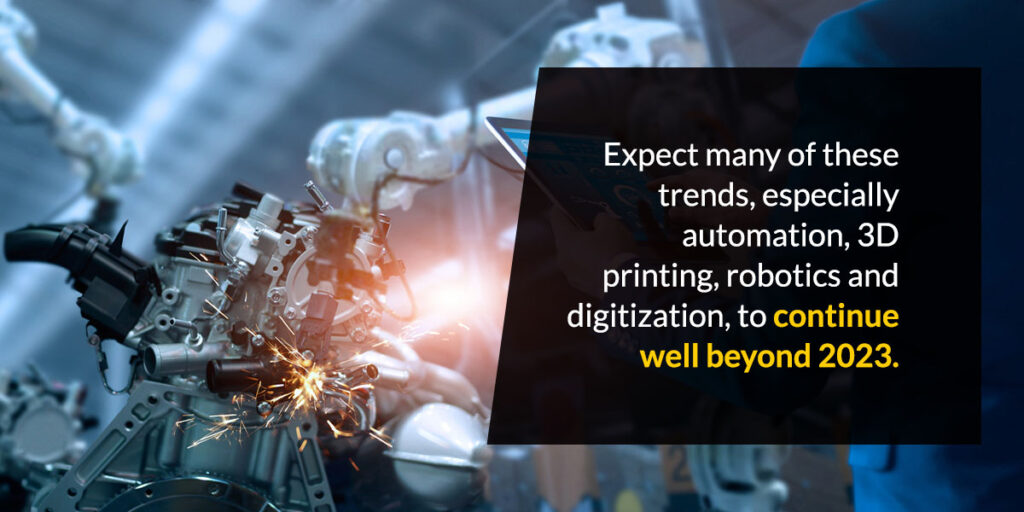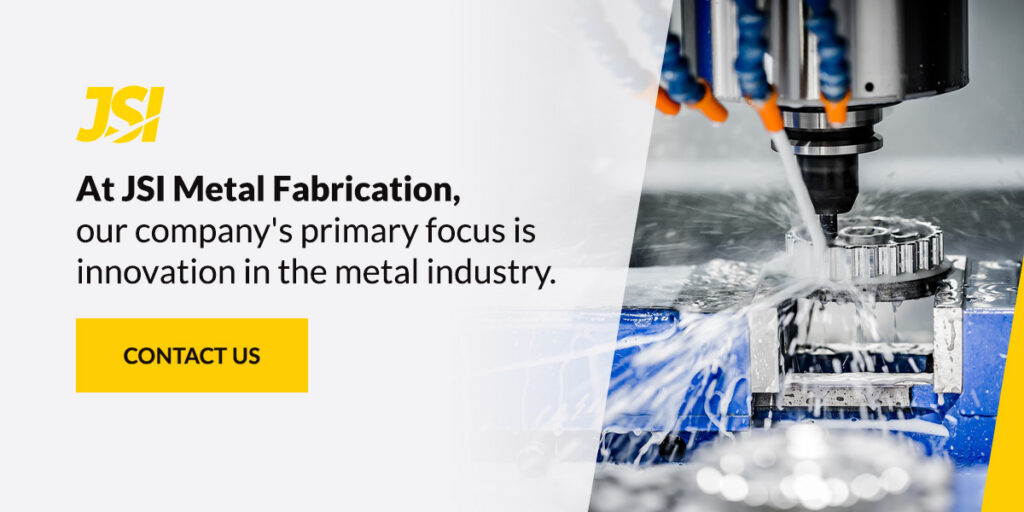
The metal fabrication industry continues to evolve each year. New technologies impact processes such as electroplating, machining, welding, bending and precision cutting and how companies implement them. The future of metal fabrication will provide significant challenges in the coming years, but it will also yield impressive new capabilities.
Metal Fabrication Trends
Advances in technology and business operations have made metal fabrication more efficient, precise and cost-effective. Many new metal fabrication trends in 2023 will continue to drive the industry forward, improving productivity and addressing supply chain challenges and labor shortages.
Examples of current trends impacting the metal fabrication industry include:
- Automation: Automated technologies have influenced the industry in recent years, and the trend will likely continue. Rather than relying on human intervention, automation has helped make the metal fabrication industry more efficient and precise. Specifically, integrating automation into computer numerical control machining can increase efficiency and productivity by eliminating many repetitive steps. These machines require fewer operators and can improve precision and safety in work environments.
- Robotics: Many jobs within the metal fabrication industry can pose a risk to workers, increasing the chance of serious injury. Collaborative robotics can perform tasks that might be too dangerous for humans and substitute for them when performing tedious or repetitive jobs. Robots can also introduce new jobs in the sector, as employees have to program and help operate them daily.
- Cybersecurity: As metal fabrication companies become more reliant on cloud-based technologies, the risk of a cybersecurity breach has increased accordingly. Businesses must become more vigilant and implement proactive measures to combat cyber threats. Implementing cybersecurity measures helps reduce the risk of data breaches. However, companies should still educate employees about phishing and hacking tactics to protect them from cyber-attacks.
- 3D printing: Also known as additive manufacturing, this process provides more customization opportunities for metal fabricators and their customers. 3D printing can help increase customization levels, allowing manufacturers to produce products of any type with minimal waste.
- Reshoring of labor: Outsourcing manufacturing overseas has been a decades-long trend in many industries. In metal fabrication, the opposite occurs. Rising production costs in foreign countries are causing U.S.-based fabricators to rethink their business model and bring more of these processes back home. As a result, the metal fabrication industry can be more innovative, creative and cost-effective. The sector is also opening up more work opportunities for Americans.
- Adopting lean manufacturing methodologies: Lean manufacturing is a manufacturing process that focuses on reducing production steps and eliminating waste. Metal fabricators that adopt these practices can experience significant cost reductions without sacrificing productivity.
- Digitization: Many metal fabrication companies are transitioning to digital technologies like electronic tools and devices that generate, process and store relevant data. These technology-based platforms can work with a human workforce to increase productivity and efficiency. Digitization can also help gather, measure and analyze information that can identify challenges in efficiency and evaluate employee productivity and skill.

The Future of Metal Fabrication
Expect many of these trends, especially automation, 3D printing, robotics and digitization, to continue well beyond 2023. These technologies should make companies within the metal fabrication industry more streamlined and productive. They’ll also allow fabricators to adapt quickly to their customers’ evolving needs.
These trends will also contribute to the growth of the metal fabrication industry. Automation, digitization and other technology will make many processes easier for manufacturers, speeding up processes and improving efficiency and accuracy.
Despite these innovative trends, the metal fabrication industry is experiencing the same supply chain challenges and labor shortages that other sectors are experiencing. These challenges will persist for a while as skilled laborers and material shortages impact the industry.
However, the industry can combat these challenges by investing in tradespeople’s training and education while finding alternative materials sourcing solutions. Manufacturers can also look for alternative ways to address supply chain shortages, such as improving supplier collaboration, keeping accurate inventory data, eliminating single-point failures and improving lead time accuracy.
Businesses implementing these processes successfully will gain an edge in the increasingly competitive business environment. Paying attention to trends will also help businesses gain a competitive advantage and anticipate changes that may alter their processes.
How Fast Is the Metal Fabrication Industry Growing?
The metal fabrication market size is expected to reach a value of $473.7 billion by the end of 2031, indicating rapid growth from a value of $362.4 billion in 2020. This growth within the industry is being driven by increasing demand for metal fabrication within various sectors, including manufacturing, automotive, defense and aerospace.
The market is also experiencing growth from increasing demand from end users. However, there are some factors negatively affecting growth in this section of the market, such as the lack of trained professionals and the high cost of metal fabrication.
One of the key drivers of the industry is automation. Automation and other technology can help enhance outcomes in steel fabrication, allowing customers to receive cost-friendly, high-quality parts on schedule. Automation has also helped improve quality, production volumes and precision. As automation rises within the metal fabrication industry, the industry itself is expected to grow at an increased rate.
Contact JSI Metal Fabrication to Learn More
At JSI Metal Fabrication, our company’s primary focus is innovation in the metal industry. When you partner with us for your metal fabrication needs, you can expect defect-free products, lightning-fast project turnaround times and on-time deliveries.
Contact us to learn more about our services and request a quote today.

